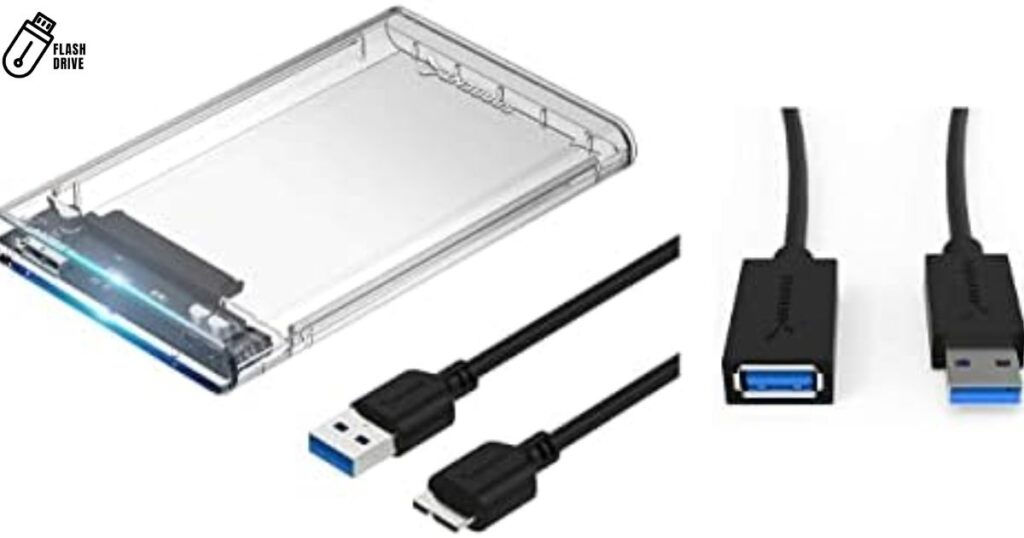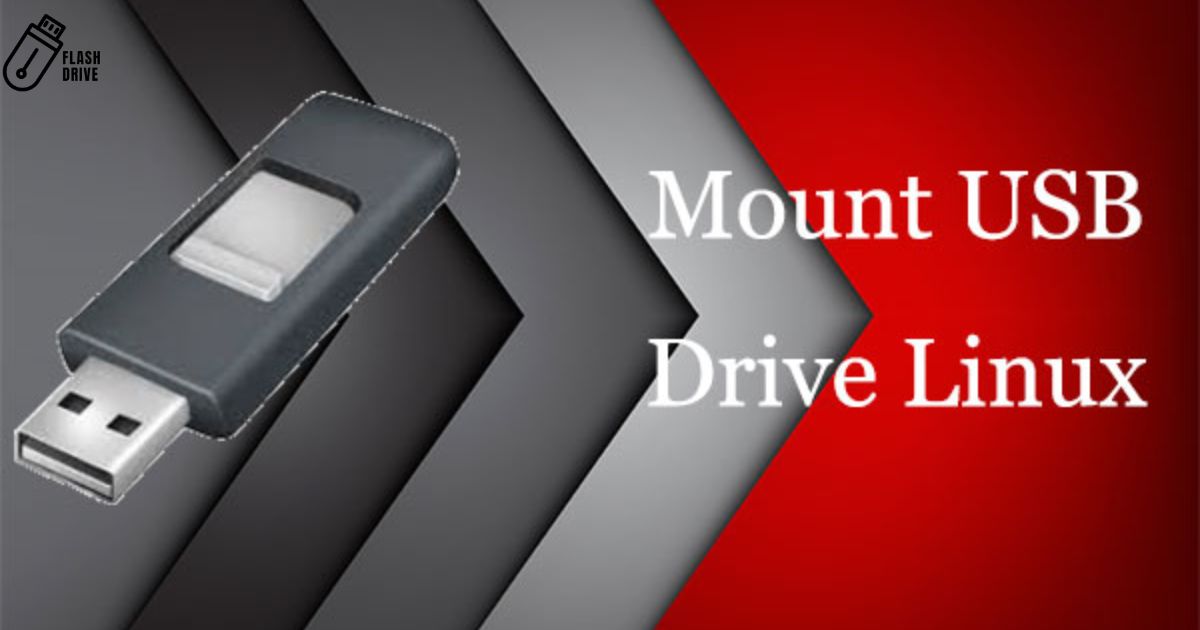Mounting a flash drive in Linux means connecting and making the device accessible to the operating system. It involves attaching the USB flash drive to a specific directory in the file system, allowing users to read and write data on the device. This process enables Linux to recognize and utilize the flash drive as an additional storage resource.
Mounting a flash drive in Linux is the process of making the USB storage accessible to the operating system. Ever wondered how to seamlessly mount a flash drive in Linux? This involves connecting the drive and using specific commands to integrate it into the file system. allowing users to read and write data seamlessly. Mastering this skill empowers Linux users to efficiently manage external storage for data transfer and storage purposes.
Plug in the USB drive, open a terminal, and use the ‘mount’ command followed by the drive’s location to access your files seamlessly. Linux makes it easy to connect and use external storage with a few straightforward commands.
Software Requirements and Conventions Used
When addressing software requirements and conventions used, it is crucial to understand the specific instructions for performing tasks, such as mounting a flash drive in Linux. Mount a flash drive in Linux involves a series of steps to ensure seamless data access.
Firstly, identify the flash drive’s device name using the ‘lsblk’ command. Next, create a mount point using the ‘mkdir’ command. Then, execute the ‘sudo mount’ command, specifying the device name and mount point. To unmount the flash drive, use ‘sudo umount.’ Familiarity with these software requirements and conventions simplifies the process.
Remember, to mount a flash drive in Linux successfully, execute these commands precisely, adhering to the conventions outlined above. By mastering these steps, users can effortlessly mount a flash drive in Linux and navigate their data with ease.
Video Example on how to mount USB in Linux
In this informative video tutorial, you will discover the step-by-step process to effortlessly mount a flash drive in Linux. The demonstration begins by elucidating the essential commands needed for successful USB mounting. The narrator adeptly guides you through the Linux terminal, emphasizing the simplicity of the procedure.
By the end of the video, you will confidently execute the commands, gaining a practical understanding of how to mount a flash drive in Linux. With clear explanations and a user-friendly approach, this video example is perfect for beginners seeking hands-on experience with USB mounting in the Linux environment.
Follow along closely to empower yourself with the skills to mount a flash drive seamlessly, enhancing your overall Linux proficiency. Unlock the potential of your operating system with this invaluable tutorial, ensuring you can effortlessly mount a flash drive whenever the need arises.
Detecting USB hard drive

Detecting a USB hard drive is a crucial task in various computing scenarios. When you need to Mount A Flash Drive In Linux, the first step is plugging in your USB hard drive. Linux systems automatically recognize and detect external storage devices, making it easy to access your data.
To Mount A Flash Drive In Linux, open a terminal window and use commands like ‘lsblk’ or ‘fdisk’ to identify the connected USB drive. Once recognized, you can proceed to mount the flash drive and seamlessly navigate your files.
Create mount point
Creating a mount point is a straightforward process in Linux. To Mount A Flash Drive In Linux, first, identify an empty directory where you want to link the external drive. Use the ‘mkdir’ command to create the mount point, ensuring it is an empty folder.
Then, execute the ‘mount’ command with the appropriate options, specifying the flash drive’s location and the mount point. Once mounted, you can access the flash drive’s contents seamlessly through the designated mount point, making data transfer and manipulation a breeze in the Linux environment. Mount A Flash Drive In Linux effortlessly by following these simple steps.
Mount USB Drive on Linux Using Terminal
- Begin the process of mounting a Flash Drive In Linux by inserting the USB drive into an available port on your computer.
- Open a terminal window on your Linux system; this is where you’ll execute the necessary commands to mount the USB drive.
- Use the ‘lsblk’ command to list the available block devices and identify the device name associated with your USB drive.
- Create a mount point directory where you want to access the USB drive’s contents. For example, use ‘sudo mkdir /mnt/usb’ to create a mount point named “usb” in the “/mnt” directory.
- Execute the ‘sudo fdisk -l’ command to display detailed information about the storage devices, ensuring you double-check the device name of your USB drive.
- With the correct device name identified, proceed to the mounting step by using the ‘sudo mount’ command. Specify the device name and the mount point you created in the earlier step.
- Confirm that the USB drive is mounted successfully by using the ‘df -h’ command, which displays information about all currently mounted filesystems.
- To enable users to access the USB drive without root privileges, modify the permissions of the mount point using the ‘sudo chmod’ command.
- Access the contents of the mounted USB drive by navigating to the mount point directory, such as ‘/mnt/usb.’
- When you are done using the USB drive, safely unmount it using the ‘sudo umount’ command, followed by the mount point directory.
- Ensure the safe removal of the USB drive physically from the system to prevent data corruption.
- Practice these straightforward Steps to Mount USB Drives in Linux whenever you need to connect and use external storage devices seamlessly in your Linux environment.
Mount USB Drive on Linux Using Disks
Mount a flash drive in Linux using the Disks utility is a straightforward process. First, insert your USB drive into an available port on your computer. Open the Disks application by searching for it in the system menu. In Disks, locate your USB drive in the left sidebar.
Click on the drive, and then press the gear icon to access the menu. Choose the “Mount” option from the menu to mount the flash drive. Once mounted, you can access its contents through the file manager. To safely eject the drive, return to the Disks application, select the drive, and click on the “Unmount” option. Now you can confidently mount a flash drive in Linux using the user-friendly Disks utility.
Accessing USB Data
Accessing USB data, especially when you need to mount a flash drive in Linux, is a straightforward process. Begin by inserting your USB flash drive into an available port on your computer. Next, open the terminal and type the command “lsblk” to list available block devices and identify your flash drive.
Once identified, use the “sudo mkdir” command to create a directory where you want to mount the drive. Afterward, execute the “sudo mount” command, specifying the device and the directory you just created.
Your USB data is now accessible in Linux. To unmount the drive when you are done, simply use the “sudo umount” command followed by the directory path. Mounting a flash drive in Linux is an essential skill, ensuring seamless access to your portable storage. So, remember to practice and master the steps to mount a flash drive in Linux effortlessly.
USB Unmount
| Operating System | Command to Unmount USB Drive |
| Windows | Right-click on the USB drive in File Explorer, then select “Eject” or “Safely Remove Hardware.” Alternatively, use the command mountVol <Drive Letter> /p. |
| macOS | Open Finder, right-click on the USB drive icon, and choose “Eject” or drag the drive icon to the Trash. Alternatively, use the command diskutil unmount <Disk Identifier> in the Terminal. |
| Linux | Open the terminal and use the command sudo umount <Mountpoint> where <Mountpoint> is the directory where the USB drive is mounted. Alternatively, use the eject command. |
Permanent USB Mount in Linux
In Linux, achieving a permanent USB mount ensures convenient and seamless access to your flash drive every time you boot your system. To mount a flash drive in Linux permanently, you can modify the “/etc/fstab” file.
Open the file using a text editor like “nano” or “vim” and add an entry for your USB drive, including its UUID and the desired mount point. Ensure you specify the file system type as well. After saving the changes, reboot your system to witness the permanent mount in action. This process guarantees that your flash drive will be automatically mounted during startup, reducing the need for manual intervention.
With this method, you can effortlessly integrate your USB drive into the Linux filesystem, providing easy access to your data whenever you need it. Mounting a flash drive in Linux permanently is a practical solution for those who regularly use external storage devices and seek a streamlined user experience.
FAQ’s
How do I mount a flash drive in Linux?
To mount a flash drive in Linux, you can use the ‘mount’ command followed by the device name and mount point. For example: `sudo mount /dev/sdb1 /mnt/usb`.
Can I make the USB mount permanent in Linux?
Yes, you can make the USB mount permanent by adding an entry to the “/etc/fstab” file. This ensures the flash drive is automatically mounted during system boot.
What is the “/mnt” directory used for in Linux?
The “/mnt” directory is commonly used as a mount point for temporary mounts, including external storage devices like flash drives in Linux.
How do I find the device name of my USB drive in Linux?
Use the ‘lsblk’ or ‘fdisk -l’ command to list the available block devices. Look for your USB drive and note the device name, such as “/dev/sdb1”.
Is it possible to unmount a flash drive in Linux?
Yes, you can unmount a flash drive using the ‘umount’ command followed by the device name or the mount point. For example: `sudo umount /mnt/usb` or `sudo umount /dev/sdb1.
Conclusion
In conclusion, mounting a flash drive in Linux is a straightforward process that enhances user convenience and accessibility. By modifying the “/etc/fstab” file and adding a specific entry for the USB drive, users can ensure a permanent mount that persists across system reboots.
This approach eliminates the need for manual intervention, providing a seamless experience every time the system starts up. Overall, understanding how to mount a flash drive in Linux empowers users to efficiently integrate external storage into their workflow, streamlining data access and ensuring a hassle-free computing experience. In summary, the steps involved in mounting a flash drive underscore the user-friendly nature of Linux systems. Whether you are a novice or an experienced user, this simple yet effective process enhances the overall usability of external storage devices, contributing to a more efficient and organized computing environment.



![Beacons.ai A Complete Guide to the AI-Powered Link in Bio Platform [2024 Review]](https://techplces.com/wp-content/uploads/2024/10/Beacons.ai-A-Complete-Guide-to-the-AI-Powered-Link-in-Bio-Platform-2024-Review-300x157.jpg)







![Beacons.ai A Complete Guide to the AI-Powered Link in Bio Platform [2024 Review]](https://techplces.com/wp-content/uploads/2024/10/Beacons.ai-A-Complete-Guide-to-the-AI-Powered-Link-in-Bio-Platform-2024-Review-150x150.jpg)